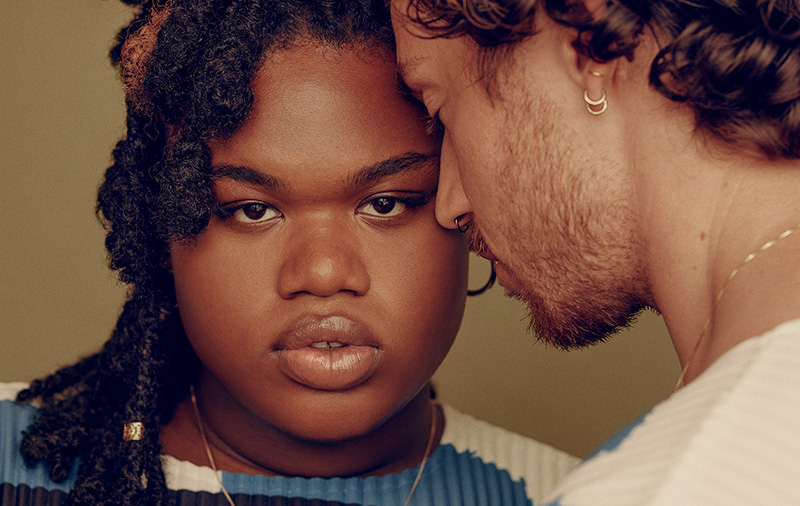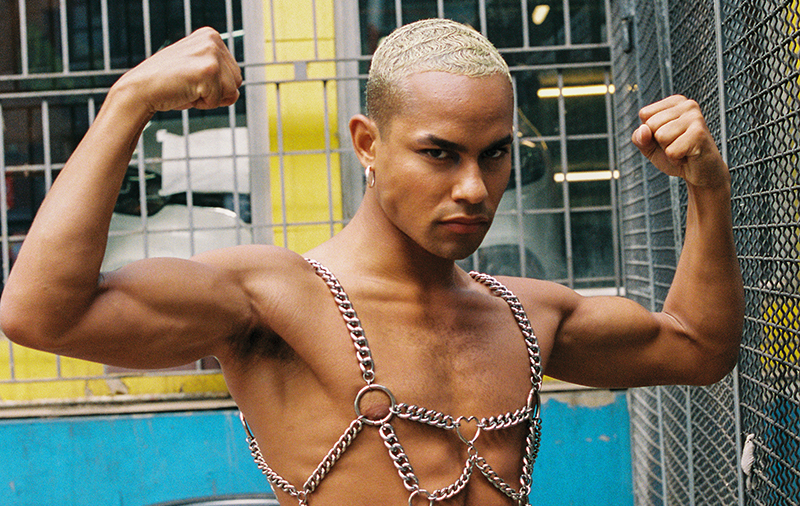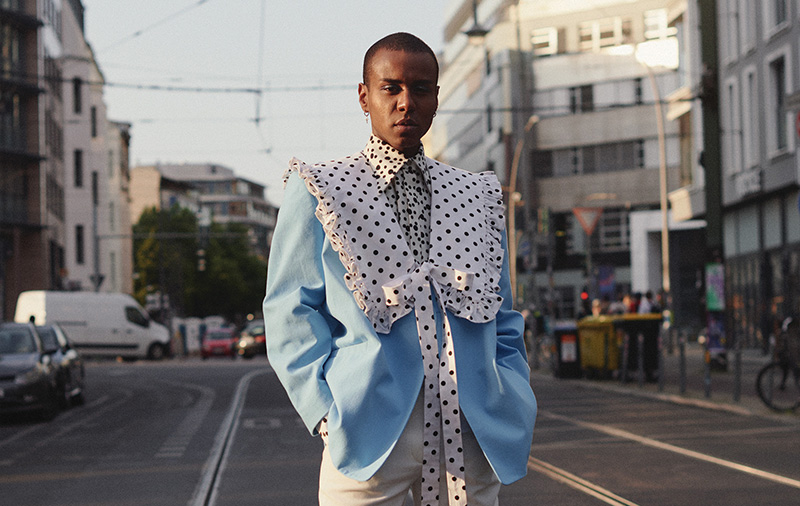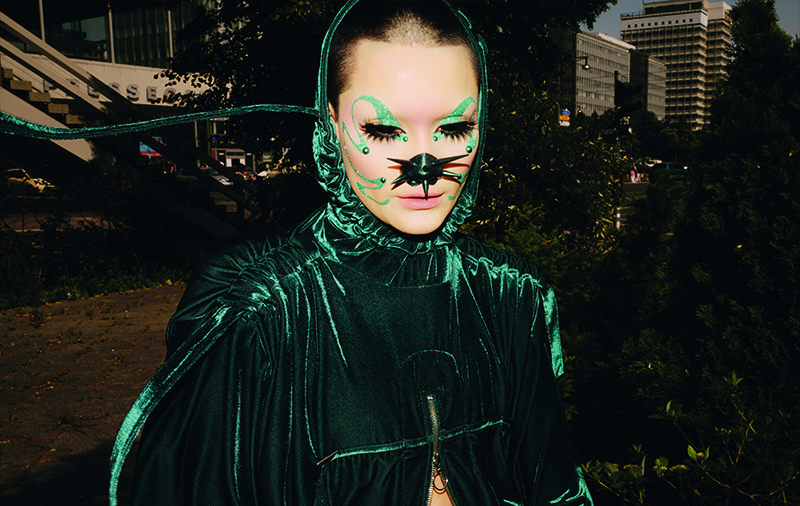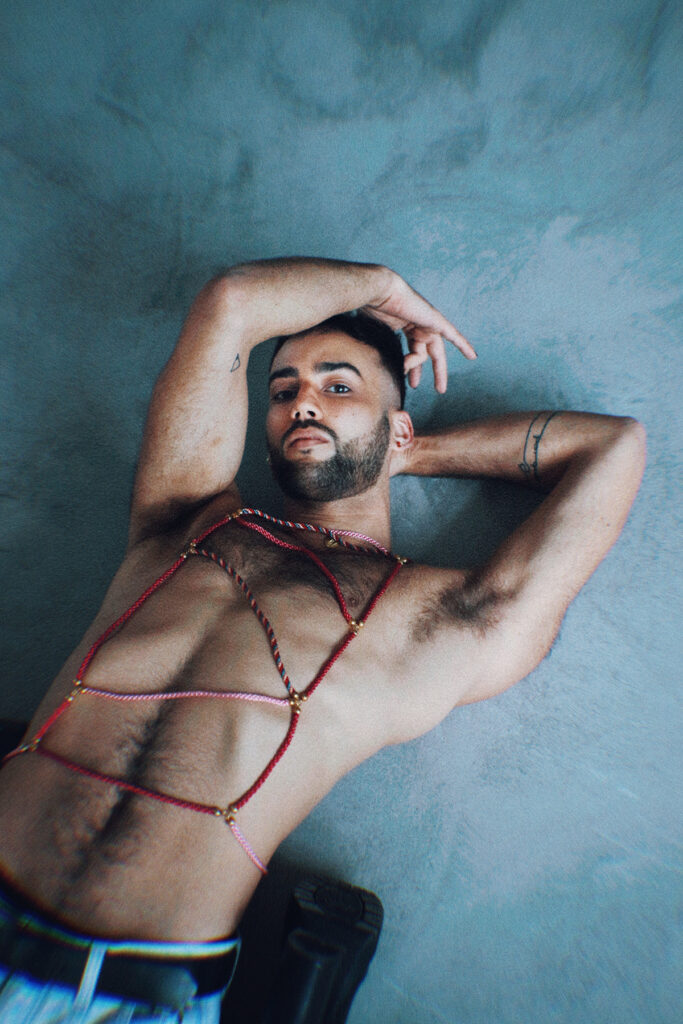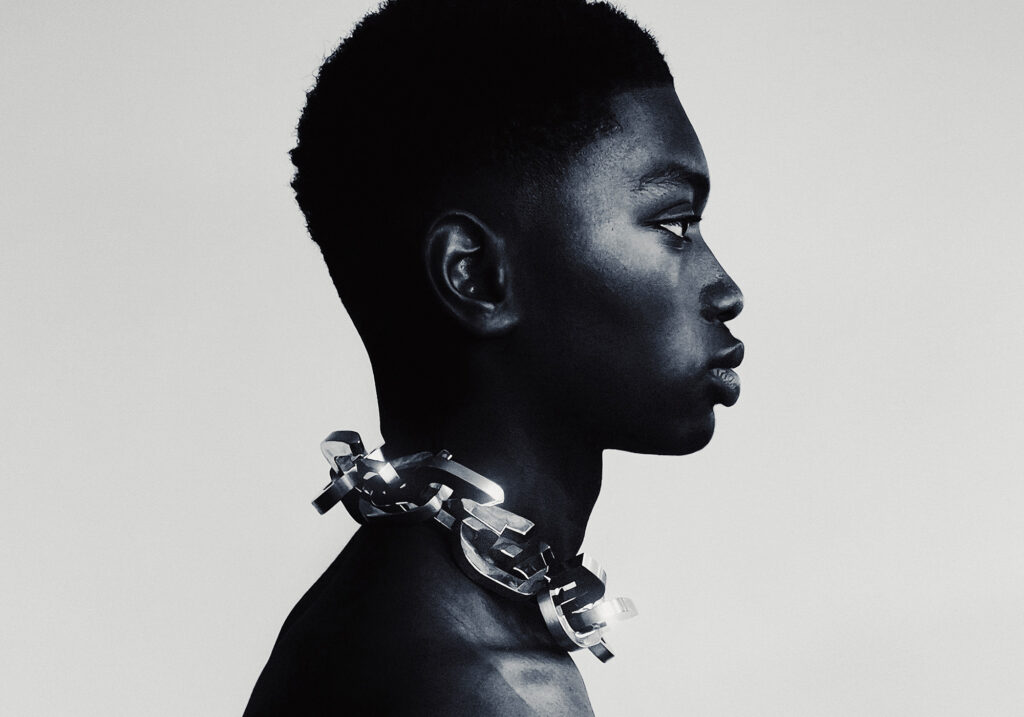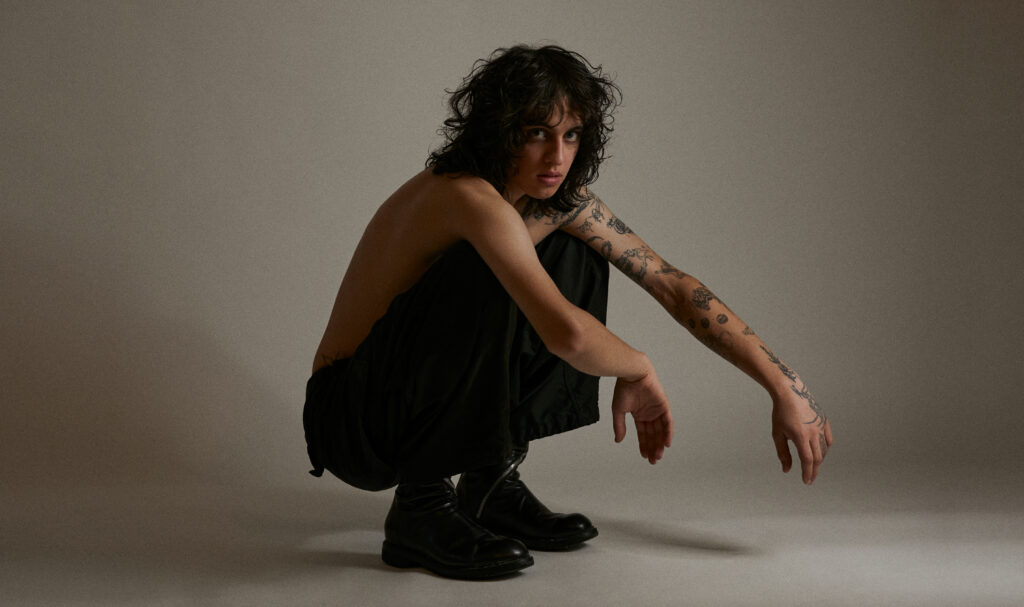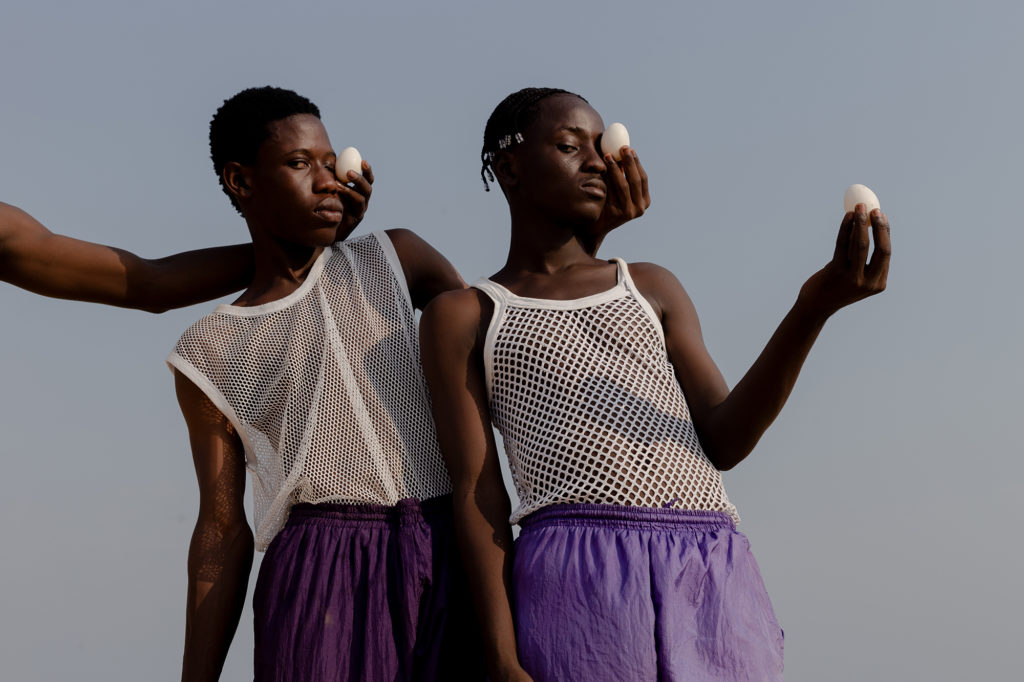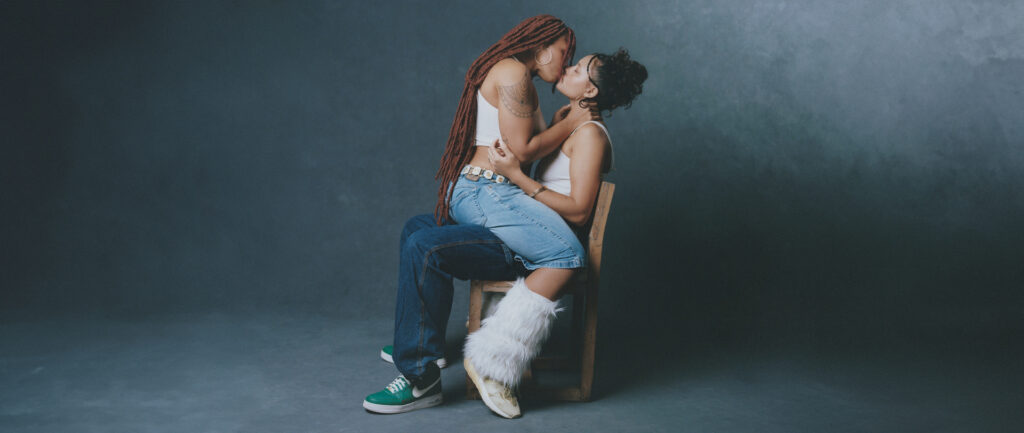Tanner Fletcher: Genderless Clothing For All
Interviewee Fashion Designer Fletcher Kessel, Tanner Fletcher
Words Drew Lor
We had a chat with Fletcher Kassel, half of fashion label Tanner Fletcher, to talk about gender expression and what fashion can mean.
Working closely with the fashion industries, Container Love believes in a gender-free clothing future. It’s why we absolutely love the brand Tanner Fletcher, founded by Tanner Richie and Fletcher Kassel, a queer couple coming from midwest USA, and as Fletcher describes: “It is a genderless, luxury, lifestyle brand that bridges the gap between masculinity and femininity as well as home and wardrobe.”
Fashion has been sometimes held up as a tool to uphold binary standards, a way to force masculinity and femininity. With Tanner Fletcher, they attempt to break these structures in place entirely. So how important is it to deconstruct gender with fashion? Fletcher elaborates: “Gender is already being deconstructed in many regards such as roles in the workplace and roles at home as well as getting rid of the glass ceiling and differences in pay between genders. Although it is not there yet, we will continue working on it until we get there. I feel like clothing is still one of the highest areas of segregation when it comes to gender,” he says.
“And why? Why do we need certain clothes for certain genders? Which takes me to the question of why do we even need gender? Non-binary and trans people are rising up but certainly not enough. Why does there have to be rules when it comes to gender and sexuality? These are both fluid concepts with no rules and no right or wrongs.”
He continues: “We should just be able to be who we are without having to be defined by social constructs. This is where clothing comes in. It really is one of the best tools for self expression and freedom when it comes to gender and sexuality. It also leads back to visibility and representation. Without deconstructing gender norms, how are queer people supposed to feel visible and represented?”
We couldn’t agree more! So we delved further into how we can actually manage to deconstruct gender at all: “Take away the labels and take away the invisible rules of our society,” Fletcher says. “It is as simple as that. People don’t even need to change their product just make it accessible to all genders by removing gender labels. As for individuals, it’s the same set of labels and rules that you should take away in your own lifestyle. Shop for what you like, wear what you like and if you can’t find it, ask for it or make it. All it takes is expressing yourself with no rules.”
Queer people know the importance of feeling comfortable in the world including the clothes we walk and live in. Fletcher tells what the connection between queerness and fashion is generally and how we can use it. “Fashion is a tool for us to use in a world that did not provide us with very many,” he says. “You can use it as much or as little as you need. Use it to be heard, use it to be seen and use it to be represented. Above all, use it to be yourself.”
Everything changes when the world has more queer visibility. We know this all too well, which is why we created the Visible Love exhibition that spreads queer love throughout Europe. We wanted to know what visibility means to Tanner Fletcher: “For us, visibility and representation means being who you are and being appreciated for it while not getting knocked down,” Fletcher tells us.
“Visibility is being able to be seen as your authentic self. This helps others follow and gives the ability for others to be seen and heard as well. Representation is having these visible people in a position that is taken seriously by the public as a whole. Visibility and representation is growing in many communities but is not there yet especially when it comes to the LGBTQ+ community. We help to make visibility and representation easier by not only being seen and representing ourselves but to have a brand that assists others to do the same thing.”
The LGBTQ+ community faces high amounts of hate crime but being queer can be a mixed bag. Fletcher elaborates: “Being queer isn’t always great! It presents us with a type of adversity that can be fearful, debilitating, and even harmful. On the other hand, it gives us the opportunity to stand up for ourselves, make change and also be a part of an amazing community that is filled with amazing and individualistic characters. I feel like the best thing that being queer has given me is that spark to make a change,” he says.
“Many, if not all of us in the queer community have spend our entire lives being labeled, feeling different and sometimes treated in an unfair way. This has given me the confidence and the power to help generations after me to not have these labels and these feelings inflicted upon them. I want to help other queer people to be their authentic selves, embrace themselves and not have a second thought about being comfortable in their own skin. We want to be a leader in getting rid of unnecessary labels and a lot of that starts with fashion.”
It’s important for queer people to focus on their own individual moments of visibility and pride, big and small. We asked Fletcher what a big moment of visibility for Tanner Fletcher was. “Tanner Fletcher was recently featured in Vogue, amongst many other amazing publications. I say this is a moment of visibility that we are proud of because Vogue US is probably one of the most well known publications in our industry,” Fletcher says.
“To see that Vogue believes in a genderless brand founded by a young, openly gay couple means the world to us. It shows that we are seen, will continue to be seen and gives us the ability to make change especially when it comes to genderless and inclusive fashion.”
Tanner Fletcher has such sleek and innovative designs that we adore. But what are the creators’ personal styles? Fletcher tells us: “My personal style is usually based on the mood I’m in or what I’m feeling in life. Right now, I have a lot of vintage pieces that I like to work into my everyday wardrobe. I am the more maximalist of the two of us. I like a little more color and more fun and funky statement pieces while Tanner is a bit more of a minimalist with a sort of uniform. He usually keeps his color palette muted and continues to wear his core wardrobe each day.”
“I wear things that I feel like myself in. This gives me the confidence to be my authentic self. It’s a tool I use to show people who I am, how to interact with me and to show my individuality.”
Self-expression is vital to queer people and being ourselves. Being hidden for a lot of our lives, self-expression can be one of our only outlets. So what does self-expression mean to Tanner Fletcher? “What you say, wear, feel, essentially what you choose to put out into the world really defines who you are and gives others a signal on how to interact and feel towards you. Self-expression is about making sure people see YOU. There is not a single person that is the same so your self-expression is extremely important,” Fletcher tells us.
“The most important part is that every individual no matter their background has the tools to be able to portray themselves exactly how they want to. For us, and for many others, fashion is a huge part of this. Even if you don’t know it, your fashion tells everyone around you something about you. We all read other people, not to judge them but to see who they are, to see what we think of them and to see how we can interact together. In our modern society, there is a gap between femininity and masculinity. For some reason they haven’t always been the easiest things to cross. This puts a huge damper on self expression because people don’t fit into the very tight and confined boxes that we try to put each other in.”
Our last question was one to the world – what is one thing Tanner Fletcher would want to tell the cisgender/straight/white world?
“I would say genderless clothing is for them as well. Removing gender labels helps (cisgender/straight/white) people as well. Just because you are a bit more feminine or masculine, doesn’t mean that you shouldn’t be able to express that. You don’t have to be queer to dress a certain way. No matter who you are, you should accept others for how they want to express themselves as long as it is not harmful or devastating to another person or community.”
Thank you to Tanner Fletcher for being with us and giving us an amazing insight into the industry and what genderless fashion can mean for the future!
Check out their website and Instagram below!
